William C. Walker, 1846 - 1919
by Brian Stevenson
last updated November, 2016
American microscopist W.C. Walker is especially known for the elegant decorations he added to the inside of his cover slips (Figure 1). He specialized in the study of diatoms, and all known Walker microscope slides are of that subject. Walker produced a modest number of slides for sale during the mid-1800s, all of which contain selected and arranged diatoms (Figures 2 and 3). He produced many other slides for his own use, most probably with non-distinctive finishes, but examples of these are not currently known to me. During 1886 and 1887, Walker and colleague Harvey H. Chase produced a series of pamphlets on “new and rare diatoms”, containing descriptions and photographs/drawings (Figure 4).
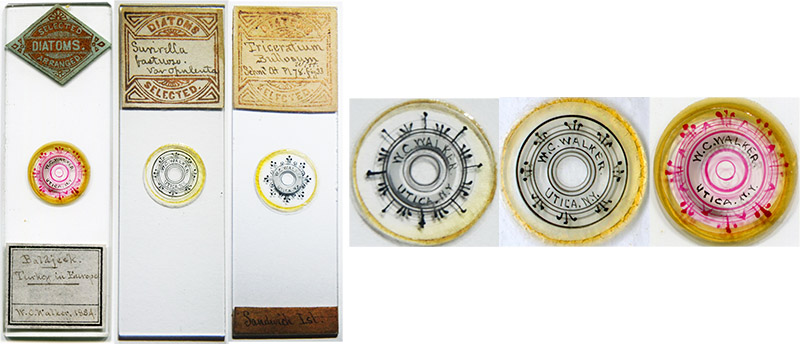
Figure 1.
Examples of microscope slides prepared by William C. Walker. The slide on the far left is dated 1884, in Walker’s handwriting. Details of coverslips from Walker slides are shown to the right. He painted his name and address, along with decorations, on the underside of the coverslips. Images from the author’s collection and courtesy of Barry Miller.
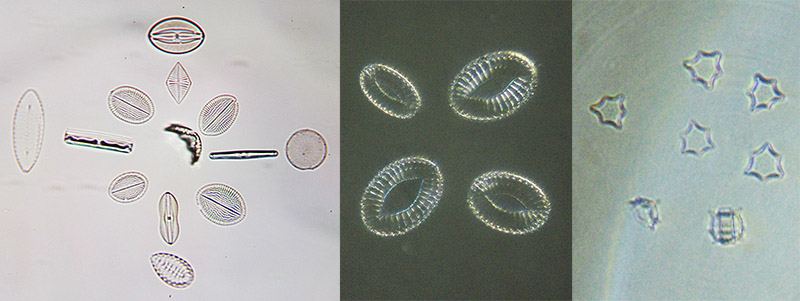
Figure 2.
Microscopic views of the specimens on the Walker slides shown in Figure 1. Left: Selected and arranged diatoms from “Baldjeck”, Turkey. Center: Surirella fastuosa. Right: Triceratium bullosum.
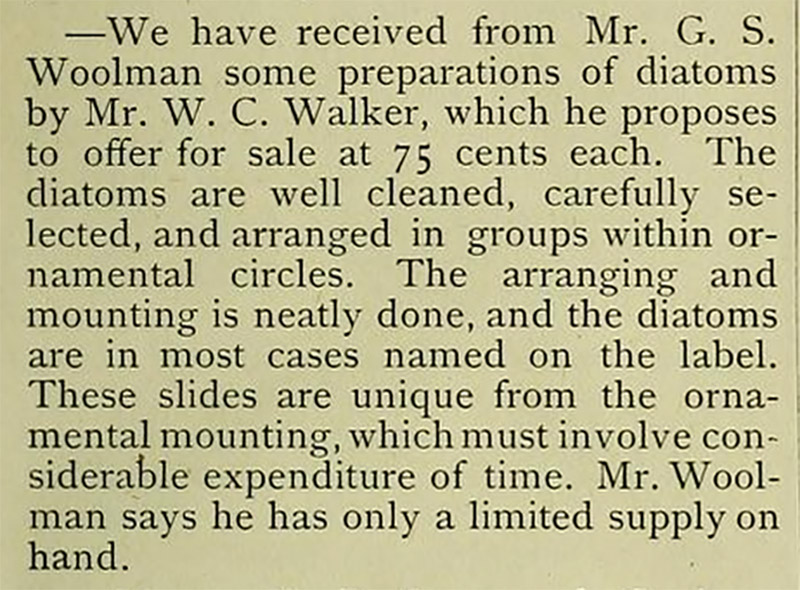
Figure 3.
An 1884 notice on the sale of Walker’s arranged diatom slides, from “The Microscope”.
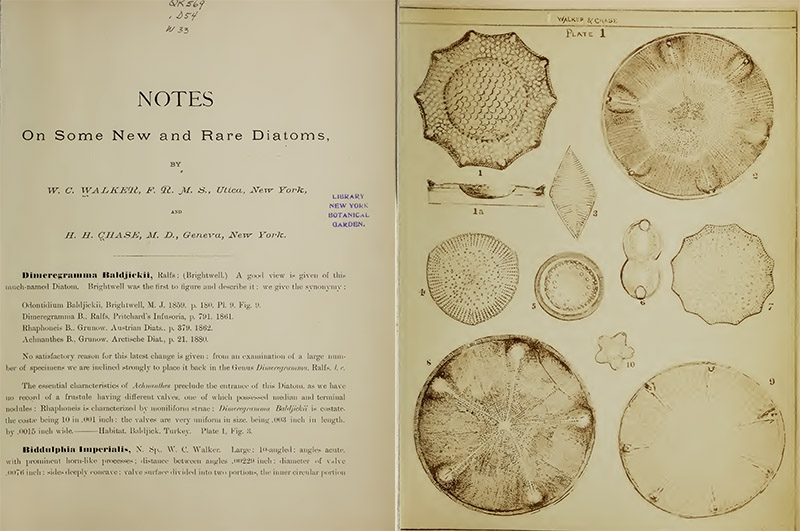
Figure 4.
Front page and a plate from an 1886 issue of Walker and Chase’s “Notes on Some New and Rare Diatoms”. The authors evidently produced the figures. Some of photographs were touched up with a pen.
There are some uncertainties about Walker’s very early life, as he was born in England but moved to the USA within a year of his birth. On later censuses, he give his birth date as December 27, 1846, with immigration occurring 1847. The earliest confirmed record of Walker’s life is in the 1850 US census, with 4 year-old William living with parents Alfred and Sarah, and 1 year-old brother George, in Utica, New York. Alfred’s occupation was described as “painter”.
That information suggests that our microscopist’s parents were the Alfred and Sarah Walker who married on March 9, 1846, at St. Oswald’s Church, Guiseley, Yorkshire West Riding. This Alfred’s occupation was also “painter”. Two children were recorded as being born in England during the last quarter of 1846 and having the names William C. Walker. One, William Charles Walker, was born in Yorkshire West Riding. Neither that William, nor Alfred or Sarah, can be confidently found in later English censuses. The other William C. Walker who was born in late 1846 is identifiable in later censuses.
Alfred Walker appears to have been an artistic painter. Later census and business records describe him as a seller of “pictures, picture frames and mirrors” and “merchant”. One of his business cards is shown in Figure 5.
William probably worked with his father until the mid-1870s. The 1870 census records William as living in nearby Lockport, New York, working as a “picture dealer”. The 1877 Utica City Directory and the Directory of Ornithologists in the United States state that William was then a “dealer in birds” (presumably stuffed skins for collectors). His 1877 business was in the same building as his father’s, at 43 Genesee Street, Utica.
On December 29, 1869, William married Adeline Peckham. She was a daughter of Merritt Peckham, owner of a factory that built heating and cooking stoves (Figure 6). The pair did not have any children.
William Walker probably began working for his father-in-law during the late 1870s. The 1880 census described him as a “clerk in store”, and the 1897 Utica Directory listed him as “secy-treas J.S. & M. Peckham Co.”.
It takes considerable skill to select diatoms from natural material, and even more to mount them into arrangements on slides. For Walker to have been commercially producing such slides in 1884 indicates that he had already been an active mounter for quite some time. When he began is not currently known.
In 1885, William Walker was elected as a Fellow of the Royal Microscopical Society.
As noted above, Walker and H.H. Chase issued their Notes on Some New and Rare Diatoms, beginning in 1886. It appears to have run for a dozen or so issues. The initial issue was reviewed in The Microscope, “This is Part I of a series of papers that will be issued four or five times a year. There are eight pages of the text and two photographic plates. We highly commend this enterprise and sincerely hope it will receive the support it deserves. But there should be a great improvement in future numbers in the original drawings of these new and rare forms, a more careful and accurate use of the pen. The edition is limited and can be obtained, by early application to either author, for one dollar a part”.
The 1900 Outline History of Utica and Vicinity included among the city’s notable residents: “William C. Walker, b. 1847 (sic). Since early boyhood a resident of Utica; microscopist; specialty, Diatoms; discoverer of nearly twenty species; member of the London Micros. Soc., (F.R.M.S)., honorary and corresponding member of many Continental Scientific Soc's. Catalogue of Diatoms of Central N.Y., and papers for Microscopical Journals”. Regarding Walker’s birth date, several secondary sources such as this one list his birth as having occurred in 1847. However, census records, which were reported directly by Walker to the census-takers, all state his birth year as being 1846. There appears to have been confusion between the years of his birth and of his immigration.
Walker was also a skillful photographer. He was a member of the Chautauqua School of Photography and first president of the Utica Camera Club (in 1893). Three of his published photographs are reproduced below, as Figures 7-9.
The 1910 census indicated that William had by then retired, and was living on his “own means”. Curiously, the 1912 Utica Directory listed William Walker as being a “dealer of beads”, possibly a supplement to his retirement income.
William Walker died on September 21, 1919. Although some later records indicate a death date of 1920, his tombstone clearly states “1919”.
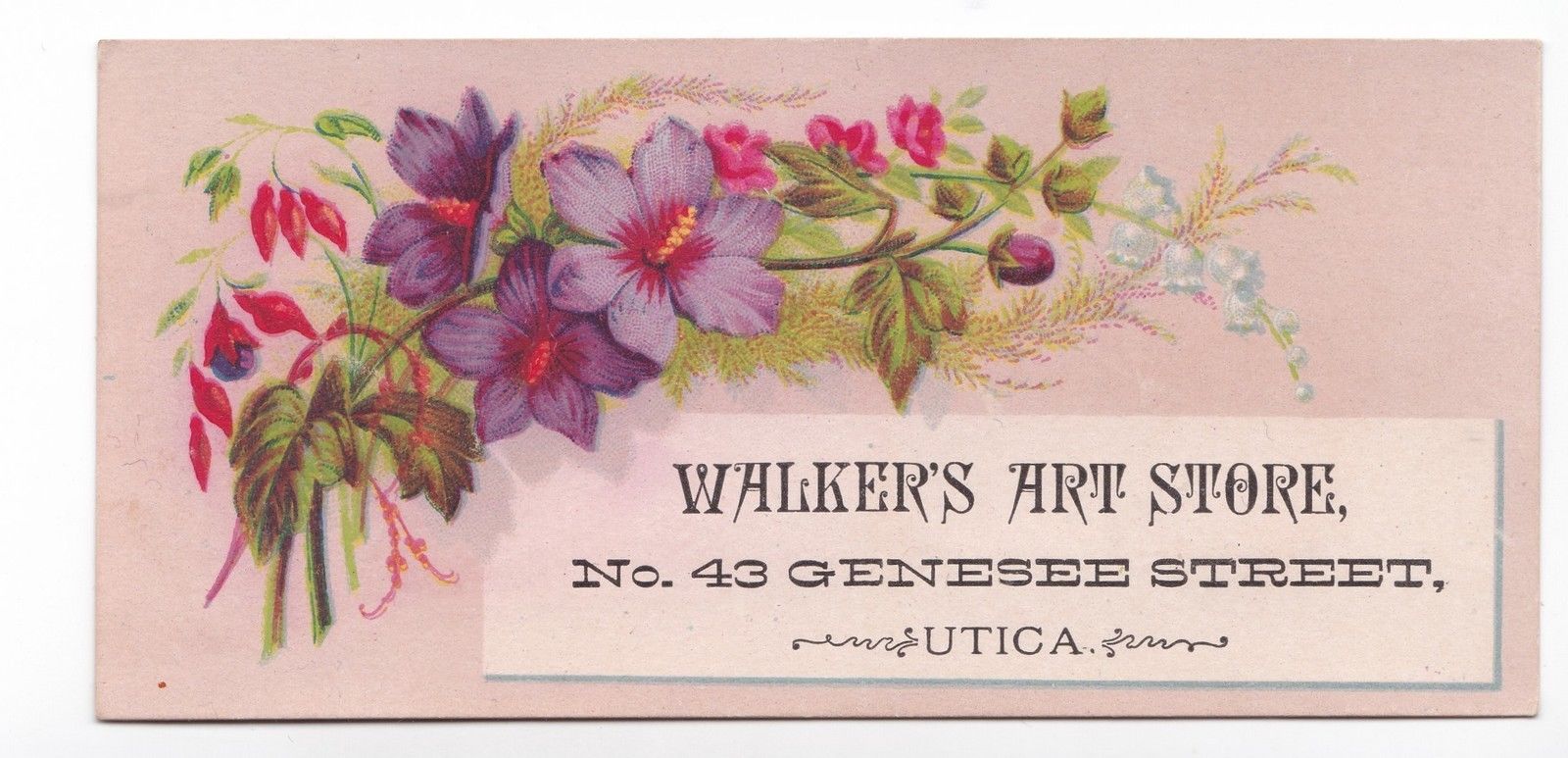
Figure 5.
A business card from William Walker’s father’s shop, circa 1870. Adapted for nonprofit, educational purposes from an internet auction site.
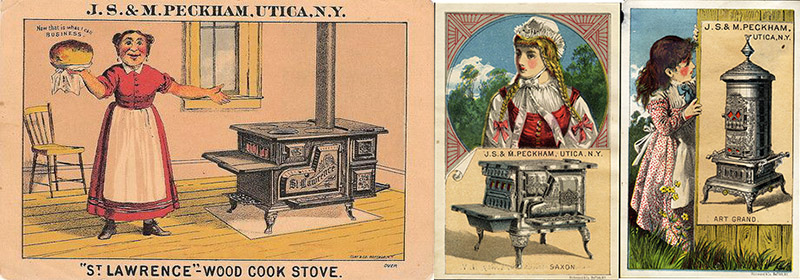
Figure 6.
Trade cards from William Walker’s father-in-law’s business. William worked for Peckham from about 1880 through the turn of the century. Adapted for nonprofit, educational purposes from internet auction sites.
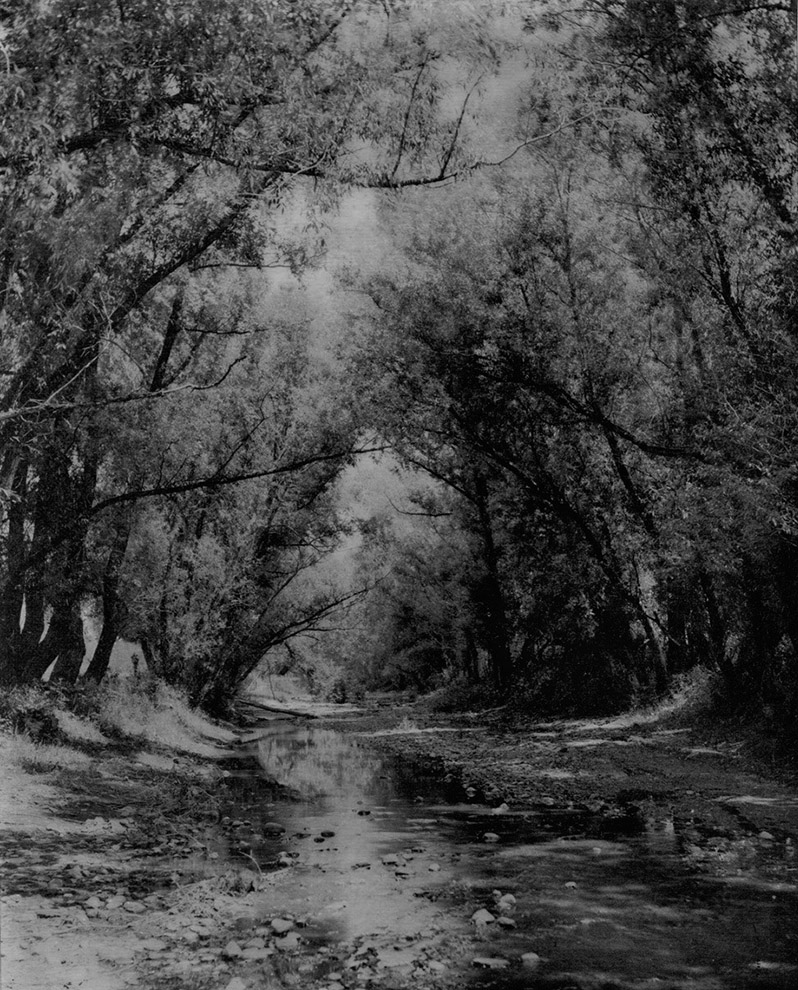
Figure 7.
A photograph by William C. Walker, “Sunlight and Shadow”, 1893. Adapted from http://photoseed.com/collection/single/sunlight-and-shadow-walker.
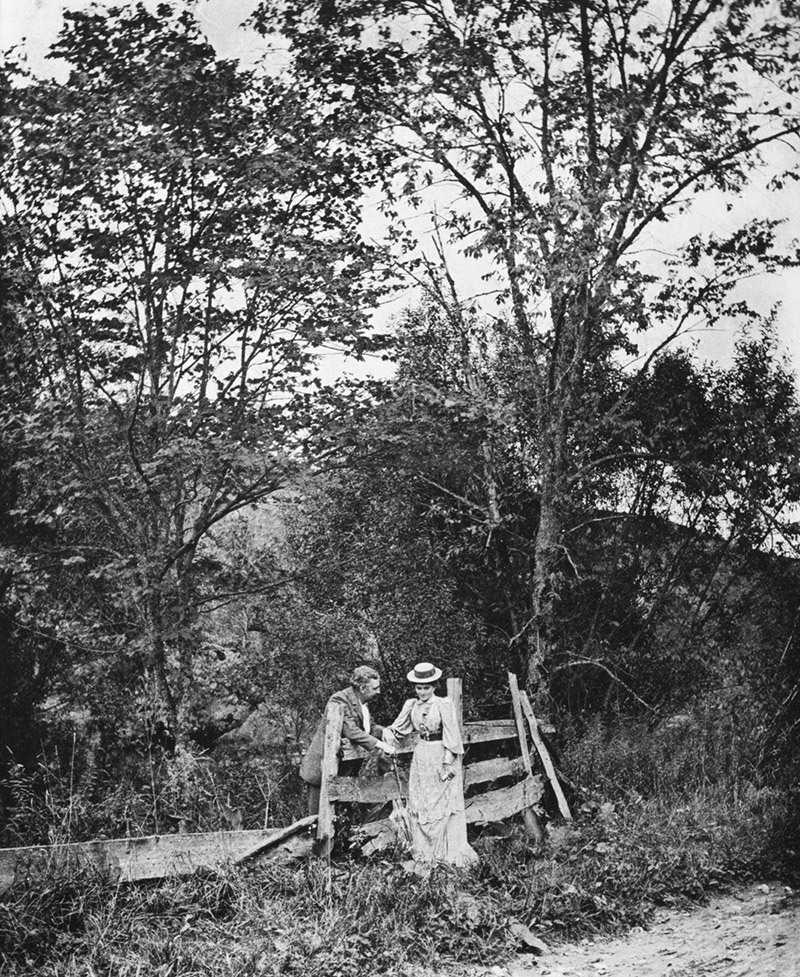
Figure 8.
1893 photograph by W.C. Walker, “The Old Old Story”. The July 7, 1893 ‘Photographic Times’ wrote, “Our frontispiece this week is from a negative by Mr. William Walker, a member of the Chautauqua School of Photography. It is a fair example of Mr. Walker’s clever composition work, and particularly well justifies its title. The carefully posed subjects tell the ‘old, old story’ better than any words of ours. The setting is most attractive and shows care in the selection. The introduction of the partly demolished fence was a happy thought, giving a piquancy to the composition. The reproduction is a photogravure from an excellent negative”. Adapted from http://photoseed.com/collection/single/the-old-old-story.
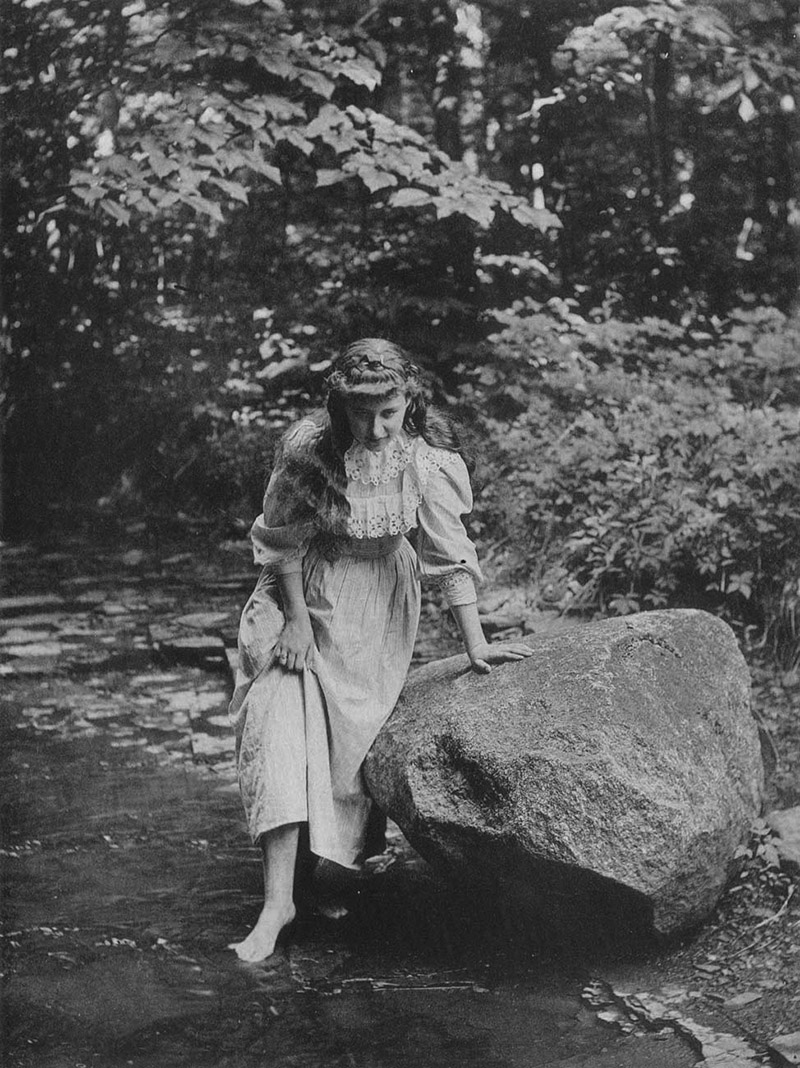
Figure 9.
“Hesitation”, by W.C. Walker, 1894. Adapted from http://photoseed.com/collection/single/hesitation-walker.
Acknowledgements
Many thanks to Barry Miller for generously sharing pictures of W.C. Walker’s work, and to Howard Lynk for his help.
Resources
The American Amateur Photographer (1893) “Utica Camera Club - At the meeting held on June 9th the following officers were elected: President, W.C. Walker, …”, Vol. 5, page 328
American Monthly Microscopical Journal (1884) Announcement of sales of W.C. Walker’s microscope slides, Vol. 5, page 239
The American Monthly Microscopical Journal (1887) Review of “Some New and Rare Diatoms, By Walker & Chase. (12 pp., 3 pls.) Flint, Mich., 1887”, Vol. 8, page 140
The American Monthly Microscopical Journal (1889) “W.C. Walker, F.R.M.S., of Utica, N.Y., gave an illustrated lecture on the microscope in that city January 16th, under the auspices of St. Andrew’s Brotherhood”, Vol. 10, page 64
Bracegirdle, Brian (1998) Microscopical Mounts and Mounters, Quekett Microscopical Club, London, page 97
A Directory of the Ornithologists of the United States (1877) The Oologist, Utica, page 16
England birth, marriage, and other records, accessed through ancestry.com
Find a Grave (accessed November, 2016) http://www.findagrave.com/cgi-bin/fg.cgi?page=gr&GRid=137949080&ref=acom
Journal of the Royal Microscopical Society (1889) Ordinary Fellows: “1885 Walker William C., Utica, New York, USA”, page lxvii
Marriage record of Alfred and Sarah Walker (1846) St Oswald, Guiseley parish records, accessed through ancestry.com
The Microscope (1886) Review of “Some New And Rare Diatoms. By W.C. Walker, Utica, N.Y., and H.H. Chase, Geneva, N.Y. 1886”, Vol. 6, page 70
Miller, Barry (2001) Some unusual antique slide coverslips, Micscape, http://www.microscopy-uk.org.uk/mag/artoct01/bmslides2.html
Miller, Barry (accessed November, 2016) http://www.victorianmicroscopeslides.com/miller/oldslides/bmiller.htm
Outline History of Utica and Vicinity (1900) William C. Walker, New Century Club, Utica, page 83
photoseed.com (accessed November, 2016) Photographs by W.C. Walker: http://photoseed.com/collection/single/the-old-old-story, http://photoseed.com/collection/single/sunlight-and-shadow-walker, and http://photoseed.com/collection/single/hesitation-walker
Rust, Albert Dexter (1891) Record of the Rust Family, A.D. Rust, Waco, Texas, page 203
Transactions of the American Society of Microscopists (1885) Members: “WC Walker, Utica, NY”, Vol. 8, page 258
U.S. census and other records, accessed through ancestry.com
Utica City Business and Street Directories, accessed through ancestry.com
Walker, W.C. and H.H. Chase (1886 and 1887) Notes on Some New and Rare Diatoms, self published








